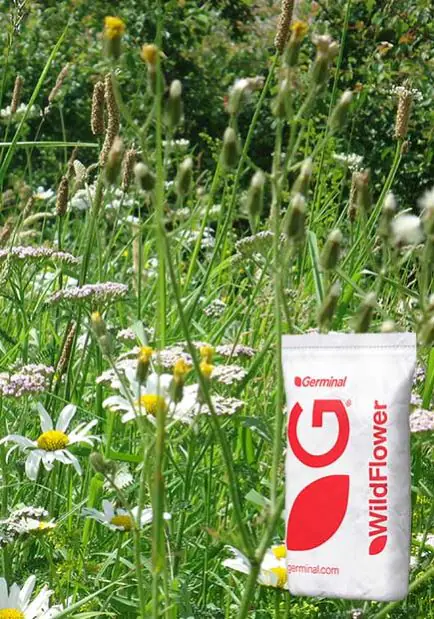Description
A grassland and wildflower community which reflects an old hay meadow before the advent of modern agricultural practises. Suitable for being managed by grazing in the long term. However, for the first few seasons managing by cutting might be required in order to develop the depth of sward to avoid excessive poaching. A great habitat for invertebrates, birds and mammals.
Where to use this mixture:
- Heavy clay soils
- Road verges
- Embankments
- Quarry areas
- Lowland areas
- To encourage insects and birds
An 80:20 mix of grasses and native wildflowers including Meadowsweet, Agrimony and Salad burnet.
Specification
| Product Name | RE1 (Traditional Hay Meadow - MG5 Grassland) | ||
| Mixture Breakdown | 1.1% | Yarrow | (Achillea millefolium) |
| 1.0% | Common Sorrel | (Rumex acetosa) | |
| 0.1% | Lady's Bedstraw | (Gallium verum) | |
| 1.4% | Oxeye Daisy | (Leucanthemum vulgare) | |
| 3.1% | Ribwort Plantain | (Plantago lanceolata) | |
| 0.8% | Agrimony | (Agrimonia eupatorium) | |
| 1.0% | Self Heal | (Prunella vulgaris) | |
| 0.2% | Meadow Sweet | (Filipendula ulmaria) | |
| 2.0% | Salad Burnet | (Sanguisorba minor) | |
| 1.0% | Birdsfoot Trefoil | (Lotus corniculatus) | |
| 2.0% | White Clover | (Trifolium repens) | |
| 2.0% | Red Clover | (Trifolium pratense) | |
| 0.5% | Yellow Rattle | (Rhinanthus minor) | |
| 0.2% | Burnett Saxifrage | (Pimpinella saxifraga) | |
| 0.3% | Greater Knapweed | (Centaurea scabiosa) | |
| 0.3% | Dandelion | (Taraxacum officinale) | |
| 3.0% | Common Knapweed | (Centaurea nigra) | |
| 30.0% | Strong Creeping Red Fescue | (Festuca rubra rubra) | |
| 25.0% | Crested Dogstail | (Cynosurus cristatus) | |
| 5.0% | Golden Oat Grass | (Trisetum flavescens) | |
| 5.0% | Meadow Fescue | (Festuca pratensis) | |
| 6.5% | Sheeps Fescue | (Festuca ovina) | |
| 3.5% | Browntop Bent | (Agrostis capillaris) | |
| 5.0% | Quaking Grass | (Briza media) | |
Web: germinalamenity.com
Tel: 01522 868714
Usage Guide
| Sowing Rate | 5 g/m2 | ||||||||||||
|---|---|---|---|---|---|---|---|---|---|---|---|---|---|
| Sowing Time | March - October | ||||||||||||
| Sowing Depth | 10 mm | ||||||||||||
| Sowing Instructions | Create a fine friable seedbed down to 150 mm in depth. Carry out two equal sowings at right angles to each other and diagonally to main axis. Broadcast manually or use seed drill, rake level and roll. Ensure good seed to soil contact. | ||||||||||||
| Maintenance |
|
||||||||||||
Click Here
|
|||||||||||||
Web: germinalamenity.com
Tel: 01522 868714
Q & A
Product Questions
How much do I need?
Enter the dimensions of your area in metres:

Trusted Supplier

Free Express Delivery







